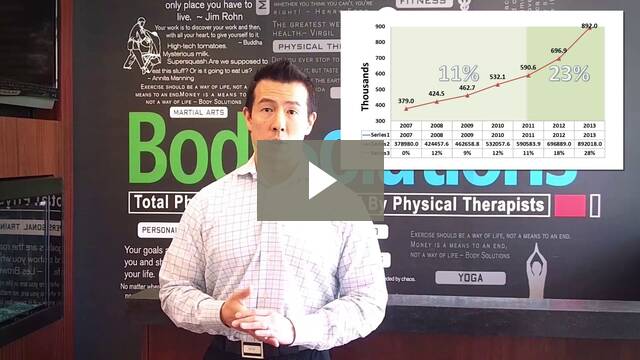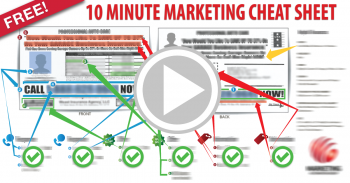Category Archives for Marketing
Can Influencer Marketing Help Your Business?
 Do you need to get your message out there but lack the budget for a full-blown marketing campaign? Influencer marketing can help you stretch your budget, spread the word about your brand—and increase your success.
Do you need to get your message out there but lack the budget for a full-blown marketing campaign? Influencer marketing can help you stretch your budget, spread the word about your brand—and increase your success.
Influencer marketing uses a source, or information, to target potential customers already interested in a product or service. Although very similar to word of mouth marketing, influencer marketing is not the same. Both word of mouth and influencer marketing are peer-to-peer marketing methods, but influencer marketing relies on some form of knowledgeable authority—someone, or something, already viewed by potential leads as trustworthy.
What, or who, are influencers?
As the name implies, influencers are people, institutions, and resource bases with a lot of credibility. What they say, do—and even eat—may influence the people who follow their moves on social media.
The rise of social media created opportunity for well-networked individuals and companies to build followers—people who are interested in what influencers have to say. Influencer marketing, when it works, gives you access to followers who can get to know your brand, service, or other product through the eyes of their influencer. For small business owners, followers of influencers could become leads.
Celebrity endorsements were the original influencer marketing. Celebrities were paid to pitch a product on television and became associated with the brand. Brands built buzz through placing a famous face next to their rental car, coffee maker, financial service, or jeans. Paid to speak the message of their sponsor, celebrity endorsements are still used today.
Forms of influencer marketing include:
- Individuals: Whether Girl with Curves, Tanesha Awasthi or Bill Gates, certain segments of the population want to know what’s up with the people they admire, or believe are of a common mind. Whether interested in their opinion on current events, fashion, or food, individual influencers are generally articulate, well-networked, and dialed into the culture. Generally enjoying an easy relationship with their followers, individual influencers can have a big impact.
- Institutions: When looking for education and information, many browsers point to reputable public institutions. For healthcare, the Mayo Clinic, and the U.S. National Institutes of Health, are go-to sources for many people. Understanding how pivotal institutions in your area of business serve your client base may help you serve your clients by association through content you generate.
- Knowledge base: One of the easiest means for small business owners to use influence marketing is to create a knowledge base and reputation as an influencer. Potential customers seeking information on a product or service find your site faster when your educational content is rated highly by search engines. Offering education, or guest blogging, gives you the chance to build authority—and influence. Education can take the form of blogs, white papers, well-placed articles, and nurtured social media channels.
In one influence marketing campaign, you can utilize all three of these resources. You can cultivate a relationship with an influencer, build your own influence base—and link to influential institutions that maintain a body of authoritative knowledge.
Points to understand about influencer marketing
Influencer marketing is different, and trickier from the standpoint of message. You are not paying money for a static advertisement that you hope reaches your target audience. With some work, you are connecting with a person who has a previously established, trusted, relationship with thousands of potential leads.
As any small business owner knows, referrals from satisfied customers are the most effective, least expensive means of growing your client base. Consider these tips about influencer marketing:
- Goals: As with any marketing campaign, know your goals. I have talked before about shiny object syndrome. While influencer marketing may be new to you, be sure you understand what it can—and cannot—do for you. Influencer marketing can do a lot of things—create buzz for your brand, drive traffic to your website, call attention to a promotion, generate awareness of your brand differentiators and more. Plan your objectives within the frame of our overall marketing strategy.
- What kind of influence works for your goals? Are you looking for a popular celebrity to plug your product on Twitter? Within the context of your goals, think about who you want to influence. This might be a general audience to gain brand awareness, or a niche population who is deeply invested in the types of product s you produce. Do you want to cultivate a conversation about your product, make a big launch—or cultivate everyday users who function as brand ambassadors?
- Building relationships and content: Now that you have your goals, and know what you want to say—how are you going to build a relationship with an influencer, and what content are you going to use? Working with an influencer takes time—and real reciprocity. Personal outreach works best, and takes time. It may be worth your own time to outsource your campaign through a consultant. An influencer is not a paid spokesperson—a mistake made in cultivating a promotional response from an influencer could backfire if the communication is not shaped with care.
These are some key ideas around using influencer marketing to build your brand—and your business profit. When you have questions about influencers, or your marketing message, call me at 585-633-7563.
To your success.
Bob Britton
Marketing MVP? Your Client
I talk a lot about value—how to value your time, and create value for your clients and customers. What about asking clients how much they value you?
In my business, I work with entrepreneurs to grow their profits. Through sound strategy, direct marketing, and business automation, I help each client grow their business to make the money they want. Sound good? A big part of that is working with your most valuable resource—your customers.
How to make your client your most valuable player
Your customer buys your product or your services. They are also your best marketing resource.
Beyond their patronage, consider the essential services your customer can provide to you:
Feedback: When you establish a working relationship with a client, ask them for feedback on your services and products. What works? What doesn’t work? Everyone likes to be asked their opinion and no one—not even you—knows your product better than those who are paying for it. Think about these tips:
- Ask: If customers seem disgruntled, or a service does not sell—take a trusted client to lunch and ask why? In my car repair business, I learned more from watching—and asking—my customers than any other sales method. Small business owners who are afraid to ask for gut-level feedback from their customers are afraid of what they might hear.
- Listen: Your client holds the key to your success—they know what they want, and they will tell you. They know what does not work for them, and they will tell you. Comments in the form of feedback cards, customer satisfaction surveys, and personal outreach let you know what is, and what is not, working with your business.
- Learn: No market analysis offers better insight than customer feedback.
Referrals: A referral from a client cuts your sales cycle in half. A huge part of getting new business is gaining the trust of a potential lead. Cold calls take time, finesse, and sure skill to warm a prospect to the point where they are willing to meet you. A client referral opens the door and invites you into the association of a previously existing relationship. Consider these tips:
- Fear: Asking clients and customers for referrals is a learned skill. Few small business owners are comfortable asking their clients to refer business to them. Remember, when you offer top-notch services and products to clients, it is okay to ask them to be your advocate.
- How to ask: There are many ways to ask for business referrals. When a sale is complete, or a service provided, ask your client if they would mind referring you to business associates who might need your product.
- Reach out: Use social media to ask clients to refer you to others, or to join your LinkedIn network. Post links for clients to leave feedback, or enable them to write reviews on your website.
- Appreciation: Thank all clients who offer referrals. While a personal thank you is nice, a small bonus—gift card, service, or subscription—all go a long way to letting your client know you appreciate their confidence in you.
Turning mistakes into gold: Blunders, foul-ups, and mistakes—they happen to everyone. It is true that a happy customer tells one friend while an unhappy customer tells ten. With the right technique, you can turn that unhappy customer into an ally who tells ten friends how well you handled their situation. Here is how:
- Awareness: Be sure you have multiple channels for clients to provide feedback to your business. Train staff to recognize and respond to customer concerns. Empower managerial and other staff to rapidly and respectfully step forward to help.
- Active listening: Listening to customer complaints and concerns is a big part of customer service. Whether you personally handle the complaint, or it is managed by your staff, ensure the disgruntled customer is given fair time to explain their beef with your business. Willingness to spend time with an unhappy customer gives nonverbal feedback that their problem is important to you.
- Comprehensive response: Real skill is needed to assess and respond to a customer complaint. A “make it right” attitude must be echoed by your actions. Whether it is deeply discounting or waiving the bill, personally walking the customer through a process to ensure they are satisfied, or asking them straight out what they feel is fair—sensitively and thoroughly responding to an angry customer with a legitimate complaint makes a friend out of a potential foe.
- Social media: Monitor your social media channels to respond to Twitter, or Facebook comments about poor service. Be clear that you care and will work with your customer—you will earn new business from it.
These are only a few of the ways your own customers can shorten your sales cycle and keep your business successful. They work in my business, and I know they will work in yours.
When you want to know about client satisfaction and building value that pays off for you, call me at 585-633-7563.
To your success.
Bob Britton
The Art of the Telephone Sales Call: Always Be Closing
When you know where you are going with a sales call, the chances are better that you and your client will get there. How? It’s as simple as ABC—always be closing.
Companies of all sizes are shifting from field sales to internal sales teams that are able to scale quickly to a new project or prospect. You and your sales department need a script and a structure to keep telephone sales productive.
As an entrepreneur, you are the face and voice of your business. You must have the awareness and ability to take advantage of a business opportunity whenever it calls. And that call may be tomorrow morning.
Making the connection: internet to telephone
Social media keeps your brand fresh and your name in play. While LinkedIn increases your potential sales pool, it does not make the sale for you. Regardless of your industry, each point of contact—social media, direct mail, email, or telephone call—adds to the perception of your company in the mind of your client.
Email and telephone calls are the primary points of contact for targeted sales leads. Before you pick up the phone, be certain about these points:
- Know who you are calling: Do your homework before you dial. Know who you want to talk to and why. Use LinkedIn for personal research, and the internet for business background. Know as much about your lead, and his or her business, as you can. Whether you make a cold call, or a scheduled sales call—make sure that your contact knows you are tuned in to them, and their business issues.
- Know your own business: Before you make the call, take stock. Use a headset to free yourself up to physically move during a conversation. Be familiar with your current business numbers, your vision, what you need from the call, and what you want as a result. Take time to refresh your business vision and your confidence—it improves your odds for success.
- Make sure you can talk the talk: Understand and appropriately use the language of your industry. Sale calls sometimes falter when reciprocity cannot be created through the use of common jargon, topical news, industry trends, and relevant stories.
- Have a plan: “Winging” a sales call does not work. While you may strike gold from time to time in an informal sales setting, you make more money when you take the time to make your plan. Sketch an agenda, unique points about your prospect, and your own market differentiators. Imagine the conversation, walk through possibilities, and see yourself closing the deal. If you do not have a process in mind when you make a sales call, you leave money on the table.
Making your best call
Service and sales calls are lifeblood for a small business owner, and they are easy to mess up.
When you have a good lead, make the most of it. When you pick up the phone, make sure you remember these tips:
- Smile: Why does it matter if you smile on the telephone? Including endorphins, smiling boosts other neurotransmitters that mediate mood, blood pressure, and heart rate. You experience a boost in confidence and greater overall relaxation. Even if no one sees it, set the stage for your sales call with a smile.
- Connect: When speaking with a prospective client, let them know they are your most important priority. Because of your research, you know something about them, and their business. Comfortable, confident rapport heightens your credibility.
- Learn: Listening is a key feature of a successful sales call. Ask open-ended questions that reassure, and encourage your lead to discuss their company, and their business issues. Explore without pushing your own solutions. Information gained while actively listening to a potential client gives you the roadmap you need to offer value and close the deal.
My job is working with entrepreneurs to create strategies and structure to make them more money. I create value in the lives—and businesses—of my clients by helping them define and boost the value they offer to their own customers.
The take-away point is that you must shift the central see-saw of your sales call from a conversation about price points, to a meaningful discussion about value. Find out what your client values, what they need—and how you can provide it.
When you approach a sales call with confidence, and genuine curiosity, it shows. If you do your homework, you already have the end game in mind. Remember, always be closing.
When you want to learn more about closing deals and boosting sales, call me at 585-633-7563.
To your success,
Bob Britton
The Biggest Success Factor
Confidence: Why Do You Need It and How Do You Get It?
Faith in your ability to achieve your goals is a key factor in your success. Confidence—what is it, why do you need it—and how do you get it?
According to the Oxford dictionaries, confidence is defined as, “the feeling or belief that one can rely on someone or something; firm trust.” In any business or social setting, firm trust is the stuff that builds dreams and relationships. After all, if you don’t believe in yourself, how can your client or your customer?
Does confidence matter?
You bet. Although there are some reasons why a lack of confidence spurs action and pragmatic thinking, few millionaires are made by second and third guessing. Regardless of their business area, successful individuals share some important traits that include:
- Positive attitude about ambiguity: A willingness to embrace the uncertainty of “what if” is a quality shared by cutting-edge researchers, top executives, and successful business owners. The developing edge of science, economics, and technology belongs to those who imagine something positive out of an uncertain future.
- Flexible attitude: Adversity is a great teacher. Shutting down in the face of rejection and failure is a common response. The differentiator is how long you are down. Reassessment after a business or personal failure is appropriate. Getting back up, taking a hard look at what happened, and committing to forward movement is essential for personal or business success.
- Delegation: Part of being a successful entrepreneur is building a great team. This takes the form of people, processes, and systems. Willingness to consider new methods and processes is an across-the-board characteristic of successful people.
Confidence is an aspect of each of these traits. Some people are born with it, but most are not. Fortunately, it’s an easily learned skill that pays back over a lifetime.
Chicken or egg: Success or confidence?
For successful entrepreneurs, confidence is 90 percent of the battle. This means belief in yourself, in your ability to learn, and your capability to live outside of your comfort zone. When our business owner working groups meet, we discuss, distill, and develop strategies to boost success. Confidence is a natural by-product. We strive to create a virtuous circle where success builds confidence and confidence builds success.
For most people, confidence is a learned—and earned—skill. Here are some tips for building and bolstering your confidence:
- Prepare: Confidence grows from genuine preparedness. Whether facing a job interview, a difficult decision, or a complete break with your old way of doing business, you benefit when you are ready for the engagement. Being prepared means knowing everything you can about your business, what works—and what doesn’t—and being ready to do something about it.
- Be your best: Exercise, eat in a way that energizes you, and pay attention to the people and things that mean the most to you. A top tenet of my strategy for success is taking time away from work—instead of being the guy working dawn to dusk and after. Creating quality time lets you see your business for what it is—an opportunity to create personal and financial freedom—not a vehicle to grind away your earthly hours.
- Strike a pose: We all know about body language. What is yours saying about you? According to research, positions of relaxed ease reduce stress hormones and increase the likelihood that others perceive you as confident. Practice a firm handshake, try not to cross your arms, and be sure to look customers in the eye—but not for too long.
- Fake it until you make it: Practicing to project confidence means you may act, and even dress, more confident at times than you really are. The more time you engage in behaviors that help you feel confident, the more likely you are to become Confidence is not about doing everything right—it is about knowing your strengths, appreciating your weaknesses, and understanding what you can do with both.
I have talked about Brian Tracy before. The man is the global authority on personal and business achievement. Mr. Tracy talks about the difference between positive thinking and positive knowing. Both are important qualities, but positive knowing is about understanding your vision and surrounding yourself with people and possibilities that can take you there.
No one is an island
I tell business owners that no one is an island—and it’s very true. Good support is a key factor in building and maintaining personal and professional confidence. A good support system can help you through a hard fall, be there to help you rebuild, and hold on to optimism when you see none.
When you are spending too much time at work and your business confidence is sinking, call me at 585-633-7563.
To your success,
Bob Britton
Nature and Nurture: Grow Your Business through Marketing Automation
Marketing automation is a key differentiator between successful and struggling businesses. Let’s talk about how you can use today’s cutting-edge technology to nurture new leads and grow your business.
What is marketing automation?
As a business person, you already know the importance of marketing to build and maintain your client base. Marketing automation (MA) is the strategic integration of software and services. It saves you time, helps you develop prospects, and enables you to maintain the one-to-one customer contact so essential to satisfying clients and increasing your revenue.
MA is an essential aspect of customer relationship management (CRM) and offers some vital benefits:
- Time management: Whether you own or manage a small business or large enterprise, you can benefit from the time and production efficiencies provided by automation tools that help you manage social media, leads, referrals, and much more.
- Staffing: The time savings offered by software tools enables you to reduce staff and more productively utilize employees. By using software to handle labor-intensive tasks, you can strategically refine your human resource planning and marketing spend.
- Be effective: Marketing automation makes it possible for you to do more with fewer resources. For example, triggered email can save a sale, thank a customer, or remind a former client of the important services you offer. Triggered transactional emails contribute to conversions and help you partner with your clients rather than just push a sale.
- Build your brand: Use less effort to increase your profile. Automated tools can monitor your brand online or create multi-channel marketing campaigns. Consistent visibility keeps your brand fresh and improves inbound marketing opportunities.
- Analytics: You can gain value and conversions as you create and maintain client touch-points throughout the sales cycle using MA. At the same time, you can collect intelligence to refine and redeliver your message or a sales incentive.
Automation is only half of it
According to a study by the Lenskold Group, companies that use integrated marketing automation are more likely to report successful sales efforts. These companies also have a greater expectation of growth than companies who do not integrate MA with their CRM system. But is “set it and forget it” all there is to marketing automation?
The answer is no. While marketing automation helps you gauge and deliver the right message at the right time to make a sale, or sustain a relationship, it is only part of the picture. Although wrapped in leading-edge technology, sound marketing principles remain. Successful marketing still means:
Offer a product that is affordable and desirable to your target market
- Sell through the channels most likely to succeed
- Create a clear offer and well-tuned message
- Treat customer feedback like gold
At Marketing Automation Group (MAG), we couple MA strategies with strong support and training to help business owners expand their profit potential. Professional success grows from nurturing your knowledge of people and businesses. Whether you are a B2B or B2C enterprise, the personal side of marketing was never more important—or more accessible—than through the use of MA.
Why are nurture campaigns important?
Personal touch is at the heart of marketing automation. Processes like lead scoring and customer segmentation contribute to your ability to see what your customers like. Effective feedback surveys let you know what your client does not like.
On a personal level, MA lets you reach out and touch clients in ways that offer value and ongoing relationships. Consider these techniques:
A follow-up email offers a thank you for a purchase
- A card or small gift sends birthday greetings
- An email or discount incentive enlivens a business relationship gone stale
MA requires a focused message and skillful use of technology to save time and help you cultivate good business—and human—relationships.
Achieving Success
How can you achieve success through MA? According to Gleanster, a few challenges to overcome include:
Marketing automation loses luster when it is not used correctly or integrated in a bigger strategic picture. Companies using MA fall short of expectations when employees or management lack training or support to achieve their desired results.
- Reliance on old methodologies or marketing attitudes reduces the benefits of MA technology. Use of large market email lists, rather than refined subsets, defeats the delivery of the right message to the right consumer.
- Metrics are important for benchmarking success—or the need for a different strategy—but may not be developed prior to deployment by overwhelmed staff or business owners.
Marketing automation is not magic. It involves leveraging tools, strategic thinking, and the right message-to-market match. Do not struggle when you can succeed. If you are a business owner ready to gain the skills and support to reach for your dreams—talk to me today.
The Great Technology Lie…
Alright, I’ve had enough! I can’t take it anymore. It’s time to set things straight. If I see another person sending me emails saying ‘double your sales in just 1 week’ or $17,000 in only 2 hours, or any other crap like that, I’m going to spit!
I’m sure the people sending this stuff are good people, that’s something I tend to believe (that most people are good), unfortunately, these people have succumbed to the great lie that is so pervasive today. It’s the lie being told by so many people that it’s almost starting to feel true. You see it everywhere, on Facebook, on twitter, in your email inbox, on webinars.. it’s literally everywhere.
What is this great lie?
That technology (in any shape or form – CRM systems (Infusionsoft, Ontraport, ect..), Webinar platforms, video hosting, blah, blah, blah…) can build your business. Don’t you believe it!!!
Now, being that I’m a former Infusionsoft Ultimate marketer myself, you might say, WTF? How can I say that? When in point of fact, Infusionsoft did help me triple sales at my business.
Here’s where I’m coming from. After winning the award, I decided to start helping other business owners implement this amazing technology into their business. After about 4 years of working with people, trying to teach them to use this technology more effectively, you know what I’ve discovered?
About 95% of the people that buy these technologies aren’t ready for them at all, most bought them to solve a problem with their business that technology in and of itself CANNOT fix.
Problems like:
Poor to non existent delegation skills
Trying to do everything themselves
No assets (money or otherwise)
No management skills
No clear offer
No clear target market
Poor messaging
And a lot more….
You see, the REASON I was able to triple sales at my business is because I already had clear offers, a clearly defined target, and kick butt messaging, BEFORE I added the technology to get that message to the right person at the right time. If you LISTEN to all of the people who have been finalists for the Ultimate Marketer (or won it), they ALREADY HAD these key things in place before getting the software. Take that a step farther, and I’d say ALL the people who have done well on the web, have these things figure out as well.
At the end of the day – the technology amounts to about 10% of the overall puzzle. It’s NEVER the technology that creates the buying frenzy – it’s the message to market match. The other 90% of success is a combination of high brain activities like crafting a clear offer, and figuring out how to reach your target cost effectively and a lot of the list above…
If you truly want to be successful, as quickly as possible, then focus your learning on these high brain, high leverage activities and you’re success will be all but guaranteed.
Continue to buy into the lie, and you’re destined for a life of struggle and strife.
– Bob
P.S. Want a program designed specifically to teach you how to master these skills? Check out my webinar (you can register here), or just sign up here.
PUT that Coffee down!…

Have you seen the movie ‘Glengarry Glen Ross‘?
There’s a powerful scene in it where the ‘Rich guy’ is berating the salesmen trying to motivate them with
threats and insults, personally, I find it amusing, but many people are offended by it.
Whether you love it or hate it, hidden within this scene there’s a few gems of wisdom.
When Jack Lemmon’s character complains ‘the leads are weak’ in response to the criticism being hurled at him, the ‘Rich Guy’ says ‘The Leads are weak? You’re Weak!’
This is actually an insight into one of the most troubling and disruptive forces working against you as you try to build your business.
It’s called victim thinking.
Let me explain…
You’ve likely heard Henry Ford’s famous quote ‘Whether you think you can, or you think you can’t – either way you’re right.’
Simple, yet extraordinarily powerful.
Getting back to the movie quote, if Jack Lemmon’s character BELIEVES the leads are weak, whether they are or not, he will not be successful.
He’s mentally put himself in a place of being a victim to some external circumstance, in this case the leads.
He believes they’re weak, and because he believes that he can’t make sales (close deals).
Yet, in the same office, there’s another salesman, working the SAME leads that is closing sales left and right, something that the ‘looser’ salesmen seem blind to.
So can it be the leads that are the problem?
The answer is an unfortunate, YES – as long as they continue to BELIEVE they are the problem, they will always be the problem.
So I ask you now…..
Where have you allowed yourself to become a victim in your business?
What beliefs are you holding on to that are holding you back?
What external ‘forces’ have you come to believe control your destiny?
Victim thinking, nothing will kill your business faster.
I’ve found the quickest and least painful way to root out victim thinking is to get around people who don’t think that way. They’ve made it a habit to remove self-limiting beliefs and instead replace them with powerful, inspiring beliefs that support their dreams, goals and desires.
On your journey to success, you’ll need a few ‘head checks’ to remove your victim thinking, let this be a reminder to do so.
To Your Success,
Bob Britton
***
Member Spotlight Steve Young
Steve Young
Body Solutions – Voorhees NJ
Body Solutions was established in 2002 sort of by accident! Yes, I stumbled onto the business owner path because the physical therapist I worked for needed to sublease space within his clinic. In 2002 I started Body Solutions and at the time, we only did personal training back then. I eventually took over the physical therapy business within the facility in Eagle Plaza. By 2005 I was running the entire clinic… Also around that time, I realized I knew NOTHING about business. I was a physical therapist and science geek looking to learn business. – Steve Young
Steve joined Marketing Automation Group (MAG) in 2012 after years of working 14 hours days with little to no time for family, friends and hobbies. His ‘aha’ moment when he realized he needed to change something within his business was when his daughter entered his home office and said “Daddy, you’re ALWAYS working……”
Like most of our members, when Steve joined MAG he didn’t have the budget for the program but he took a leap of faith!
- in his first 2 years he went from 11% growth rate to 24%
- he experienced 2x’s the growth while working 40% less
- he also started a second business where he made $219,860 working 110 hours, that’s $1,998/hour!
- that was 54% what he made in 2013
You can learn more about Body Solutions Here.
How Big Is Your Marketing Funnel?
Dear Business Owner,
My name is Bob Britton, a fellow small business owner and president of Marketing Automation Group.
Most business owners I have worked with when they began with me, have at most 3 methods to attract high quality prospects and still don’t have enough customers.
What do I mean?
Most business owners get their customers from a referral, from a walk-in, or maybe, if they are lucky, from their website.
There are TWO problems with this, the first is that they do NOT have nearly enough lead generating methods in place and the ones they do have in place are NOT working as well as they could be, if at all.. Let’s take a closer look at this.
There are at least 9 ways to get new customers for your business (actually I’ve identified and laid out dozens, but for the purposes of this article, lets go with 9) not only 3. Here they are.
1. Referrals from past customers (the way I show you how)
2. Walk-ins
3. Pay Per Click Marketing (the way I show you how)
4. New Mover Attraction Program
5. Cross selling with other business in your area
6. Open Houses
7. Inbound visits to your web site
8. Outbound email marketing
9. Direct mail to your ideal prospects (done the right way)
The more methods you use the MORE customers you will get and the more money you will make,
Its simple math.
It is very risky to only have a few methods because lets say you rely on walk-in and no one shows up. Or a direct mail campaign that worked in the past stopped working, again you’re in trouble. Wouldn’t you want as many methods working for you as you can? BUT if you have 7 to 9 methods bringing in customers and one or two falls apart you are still OK. You can STILL deposit a lot of money in your bank account.
Make sense?
The second biggest problem I see is the methods a business owner IS using are being done poorly. Let me explain by giving you a few examples.
1. Referrals- There is NO real system for getting referrals from current customers, there is no follow up. It just kinda happens in a hap-hazard way. As a result TONS of potential customers are falling through the cracks and not using the businesses services. They are letting thousands and thousands of dollars needlessly slip away.
2. No Unique Selling Proposition (USP – No businesses are distinguishing themselves from everyone else. How is a potential customer supposed to choose YOU when YOU “look” and say the same things as every other salon?
3. Pay Per Click Marketing – All the ads I see are missing the KEY elements (great headline, free information offer, 24-hour free recorded message, 800 number, compelling offer, etc.) to a successful ad. And you wonder why the results are so poor on the ads you run.
If you have any questions, need some immediate advice, or would like to get involved with my program please give me a call at 585-633-7563.
To your success,
Bob Britton
Member Spotlight Lisa Rangel
Lisa Rangel
Chameleon Resumes – Rutherford, NJ
Lisa Rangel, Managing Director of Chameleon Resumes, has built a full-service branded executive resume writing service and leadership job search consultancy specifically created to partner with executive candidates who want professional guidance from top resume, LinkedIn, job search and interview experts to navigate today’s complex, high touch, technological marketplace. Lisa’s unique combination of qualifications set her apart, making her a leader in the job search industry:
Selected as one of the Top 100 Career Websites by Forbes.com
Hired as a Group Moderator of LinkedIn’s Premium Job Seeker Group
Regular contributor of LinkedIn Profile and Lead Generation Articles for the Official LinkedIn Blog
Lisa joined Marketing Automation Group (MAG) in March 2013.
- in her 1st quarter after joining MAG, Lisa made $100k
- that was 3x’s what she made in her 1st quarter in 2013
- that was 81% more than she made in 2012
- that was 54% what she made in 2013
You can learn more about Chameleon Resumes Here.









